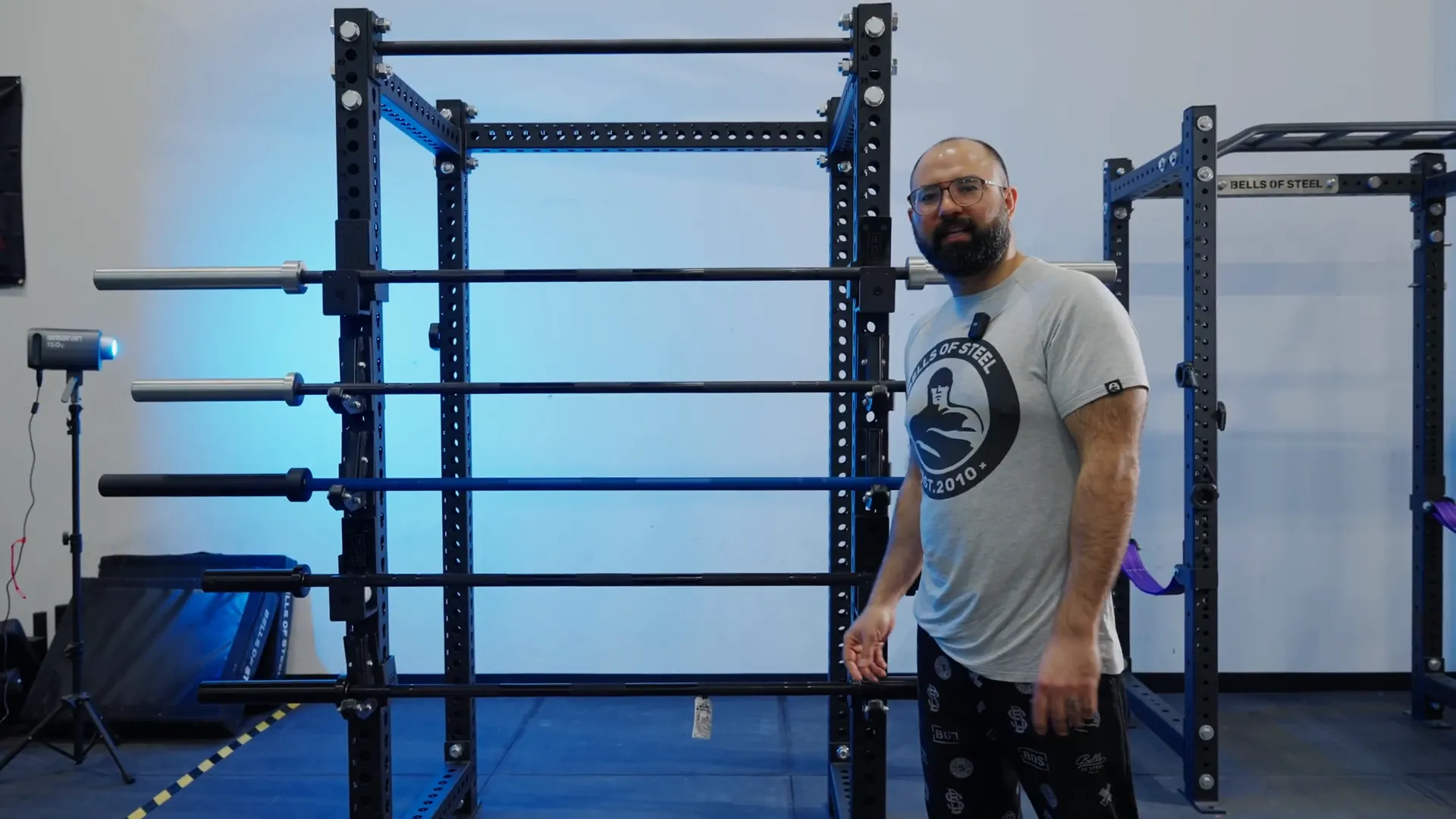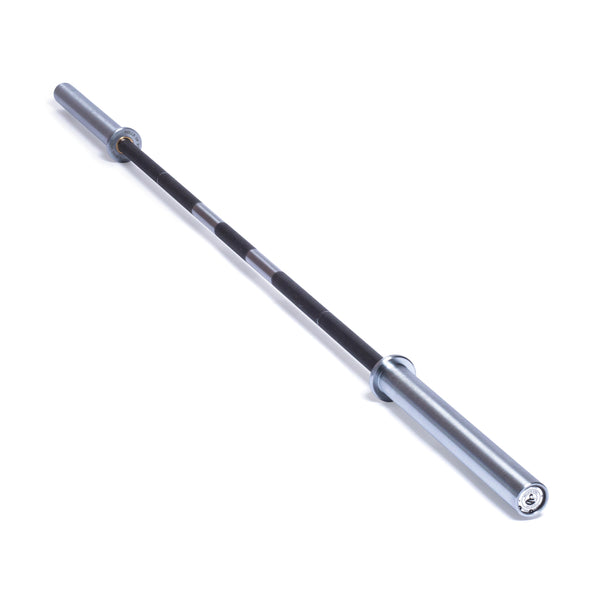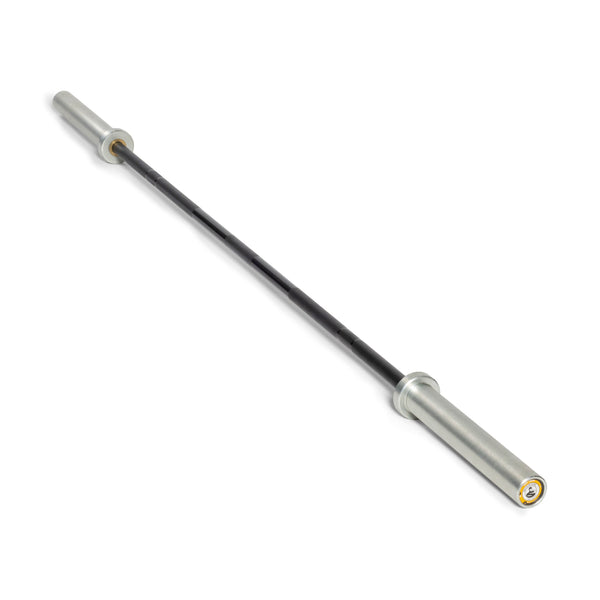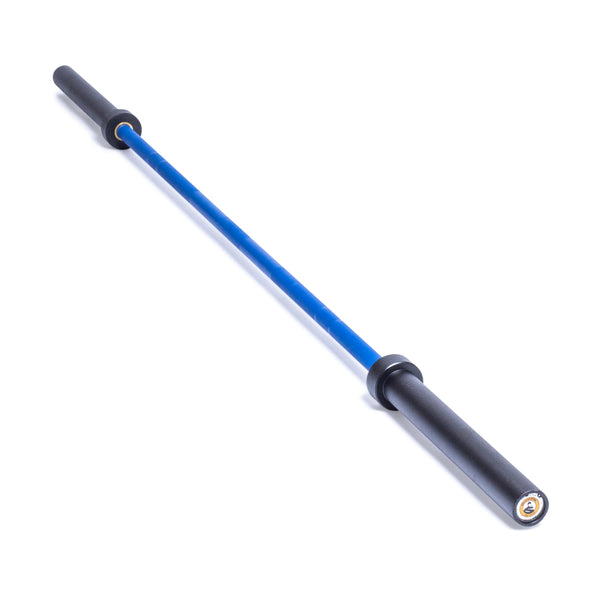If you're serious about building a versatile and effective home gym, one of the smartest investments you can make is in quality barbells that cater to different lifting styles and needs. Having a range of bars allows you to train smarter, protect your hands, and even save space, all while keeping your workouts fresh and productive.
Bells of Steel offers a lineup of utility bars designed to be multi-purpose, combining features that work well for powerlifting, Olympic lifting, and general strength training.
In this guide, we’ll break down the differences between each utility bar to help you decide which one fits your gym and your goals best.
What is a Utility Bar?
The Utility Bar is one of our bestselling bars, and for good reason. It’s designed as a multi-purpose barbell that suits powerlifting, Olympic lifting, and general use.
However, it’s important to understand that it’s not specialized to excel in just one discipline. Instead, it offers a balanced approach that fits most training styles without the extreme features of dedicated specialty bars.
Some of the common traits you’ll find on all utility bars include:
- Passive knurling for a comfortable but effective grip
- Dual markings tailored for both Olympic lifting and powerlifting hand placement
- Bushings in the sleeves for smooth rotation
Let’s discuss why this bar is more of a multi-purpose tool than a specialized one for powerlifting or Olympic lifting.
The Knurling: Why Passive Can Be Better
Powerlifters often prefer an aggressive knurling, like the one on our Barenaked Powerlifting Bar, which has a “cheese grater” texture to ensure you never lose your grip during heavy deadlifts or other lifts.
The utility bar, on the other hand, has a more passive knurling. This means it’s less harsh on your hands, which can be a blessing if you train frequently and want to avoid callous tears or discomfort. Even if you’re a powerlifter, there’s merit in using a bar with passive knurling for day-to-day training to keep your hands in better shape.
Bushings vs. Needle Bearings: What it Means for You
Another key feature is the type of sleeve rotation. The utility bar uses bushings rather than needle bearings. Needle bearings allow for greater spin, which is ideal for Olympic lifts like the clean and snatch, where the bar needs to rotate smoothly to protect your wrists and transfer force efficiently.
For powerlifting, however, too much sleeve rotation can hinder your lift. You want the bar to feel stable and fixed during heavy squats or bench presses. Bushings provide enough rotation for casual Olympic lifting but keep the sleeves more stable during powerlifting movements.
Dual Markings for Versatility
Utility bars feature dual markings to accommodate both Olympic lifting and powerlifting hand placements. In powerlifting, your hands shouldn’t go past the inner markings during a bench press. Olympic lifting markings, meanwhile, are positioned to guide hand placement for clean lifts. While the exact origin of these placements is a bit unclear, they serve as useful visual cues for lifters practicing either style.
The Middle Knurl: Added Grip for Squats
Many multi-purpose bars skip the middle knurl, but the utility bar includes a middle knurl with a passive texture. This extra grip is helpful when you’re doing squats to keep the bar stable on your back. Some lifters worry that a middle knurl can irritate the chest during cleans, but with the passive knurling on this bar, that’s rarely an issue.
Shaft Diameter: The Perfect Middle Ground
The utility bars have a shaft diameter of 28.5 mm. Why this size? Olympic lifting bars are generally thinner at 28 mm, while powerlifting bars are usually 29 mm. The 28.5 mm diameter is a nice compromise that’s common in multi-purpose bars, offering a balance between the feel of both types of bars without committing fully to one standard.
Breaking Down Each Utility Bar
The OG Classic Utility Bar
This is the original utility bar that started it all for us. It features:
- Black zinc shaft and white zinc sleeves
- Standard competition bar weight of 20 kg (44 lbs) and length of 7 feet (220 cm)
- Passive knurling with dual Olympic and powerlifting markings
- Bushing sleeves for rotation
It’s the most popular and common utility bar, perfect for anyone looking for a reliable, all-around barbell that can handle a variety of lifts.
The Juno Bar: The Women’s Utility Bar
The Juno bar is our women’s version of the utility bar. It’s built to meet the specifications set by the International Weightlifting Federation (IWF) for women’s competition barbells:
- 25 mm shaft diameter (thinner than the 28.5 mm utility bar)
- 15 kg weight (lighter than the 20 kg men’s bar)
- Slightly shorter length
- Black zinc shaft and white zinc sleeves
- Passive knurling and dual Olympic/powerlifting markings
- Bushing sleeves
The Juno bar is a fantastic choice if you prefer a lighter, thinner bar that matches what you’d see in Olympic weightlifting meets. Fun fact: it’s named after Kaevon's daughter, Juno, which adds a personal touch to this women's bar.
Blue Cerakote Utility Bar: A Colorful Upgrade
If you want to add some style to your gym, the Blue Cerakote Utility Bar is a great pick. It shares the same specs as the classic utility bar, but with a vibrant blue Cerakote coating on the shaft and black Cerakote sleeves.
What’s Cerakote? It’s a high-quality, durable finish that offers:
- Vibrant, eye-catching colors for aesthetic appeal
- Good chip resistance, comparable to black zinc
- No compromise on grip or knurling texture
While Cerakote is pricier, it makes your bar stand out. We’re starting to replace Cerakote sleeves with titanized finishes for better chip resistance on the sleeves, which tend to get the most wear from plates.
Short Utility Bars: Rackable and Non-Rackable Options
This Short Rackable Utility Bar is similar to the classic utility bar but shortened for convenience. It’s great for:
- Lightweight training and accessory work
- Easy storage in smaller spaces
- Use in cross-training competitions
Because it’s rackable, the sleeves are shorter to fit safely on standard racks. This means you can usually load about two bumper plates per side, depending on size and collar thickness. It’s a lighter, cheaper option that still offers the same 28.5 mm diameter and black zinc coating.
Short Non-Rackable Utility Bar
Similar benefits to the Short Rackable Bar in terms of weight, length, and price, but with a key difference:
- The shaft length is shortened, but the sleeves remain longer than on the rackable short bar
- This allows you to load more plates—up to three full-size bumpers per side, depending on plate width
- It’s not rackable, so you won’t be able to rest it on a standard squat or bench rack
This bar is ideal if you want a lighter secondary bar for deadlifts or accessory work, but don’t need to rack it frequently. It’s also popular in some cross-training events.

Which Utility Bar Should You Choose?
Choosing the right bar depends on your training style, goals, and gym setup. Here are some closing thoughts to guide your decision:
- Primary Bar Choice: Most people should opt for a full-size bar—either the classic Utility bar, Juno bar, or the Cerakote version. These bars provide the best balance for everyday training and competition prep.
- Secondary Bar: It’s surprisingly handy to have a second, shorter bar for accessory work like landmine exercises or drop sets. The short rackable utility bar is my personal favorite here because the ability to rack it adds versatility.
- Women’s Bar: If you’re training for Olympic weightlifting meets or just prefer a lighter, thinner bar, the Juno bar is built to meet those needs and specs.
- Aesthetics Matter: Your home gym is your sanctuary, and many people now invest in matching and visually pleasing equipment. The Cerakote bars offer a vibrant pop of color without compromising function and even help protect your barbell in humid environments (here's looking at you, garage and basement gym owners).
- Storage and Space: Short utility bars are perfect for smaller spaces or as secondary bars. Decide if you want rackability or more sleeve space to load plates, and choose accordingly.
Final Thoughts
Different utility bars offer a blend of features that make them excellent multi-purpose tools for a variety of lifters. Whether you want the classic feel, a women’s specific bar, a colorful upgrade, or a compact secondary bar, there’s an option tailored to your needs.
Investing in the right barbell can make a huge difference in your training experience, from protecting your hands with passive knurling to having the right sleeve rotation for your lifts. Plus, having a couple of bars in your gym opens up training possibilities you might not have considered before.
Whatever you choose, your home gym will thank you for the upgrade.




